Don’t be surprised if you’re salivating over the idea of eating juicy grilled sausages with homemade mustard after reading (or in my case writing) this post. Learning how to make whole grain mustard from scratch is so much easier than I anticipated. If you go through the process of canning it, you can have homemade mustard stored and ready to go for the year! Condiments made in your own kitchen just taste better. It must be that extra touch of love mixed in.
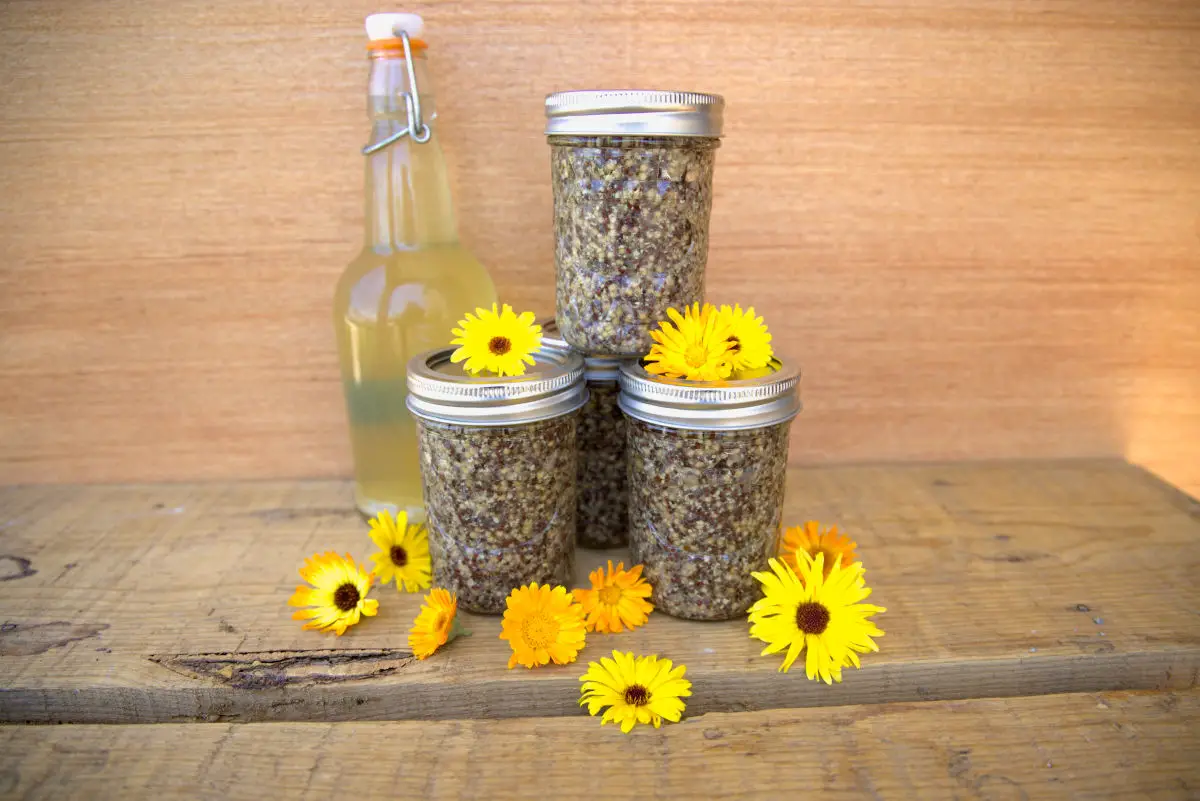
How to Make Whole Grain Mustard
This trusted recipe for homemade whole grain mustard from foodpreserving.org uses just five ingredients and will save you money at the market! It’s great for making dressings, spreading on sandwiches, and pairing with your homemade sauerkraut and sausages. I followed their recipe as written.
Colors of Mustard Seeds
There are three main types of mustard seeds used in cooking and making all varieties of mustard: white (also called yellow), brown, and black. White is the mildest of the bunch, and black has the strongest flavor. They are all high in minerals, fiber, and omega-3. This recipe calls for half white and half brown, but feel free to experiment with different combinations to suit your taste for the spice level. Black and brown are much more similar in flavor to each other than either is to the milder white seed.
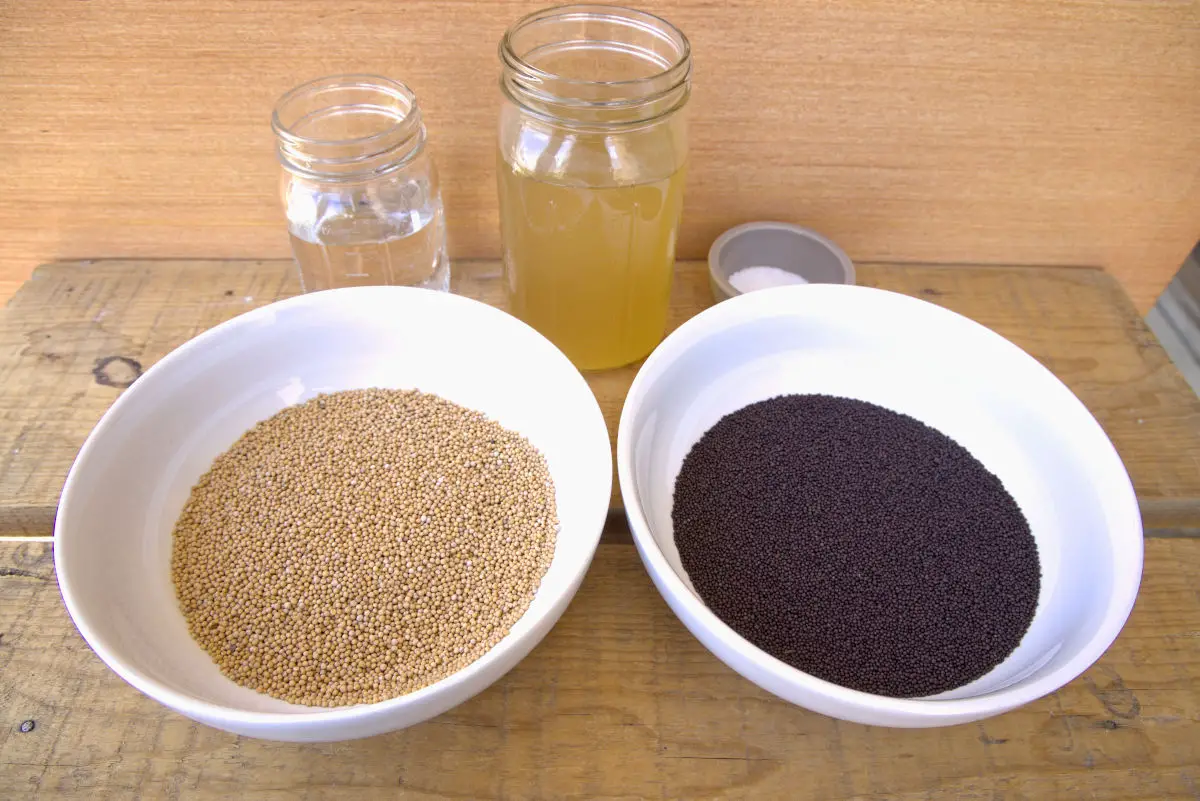
I also learned in my research that the entirety of a mustard plant is edible- the seeds, leaves, and flowers- which always makes me a little giddy. Now I have to research other ways to use the leaves (and more so the flowers) because that’s just the way I roll.
The Process of Canning
If this recipe comes early on in your water bath canning journey, be sure to do the proper research before starting. Important information about the process and the correct sterilized environment will make it successful and safe for consumption. There are kits including the basics for water bath canning to help get you started. You’ll just need to purchase your own jars with lids.
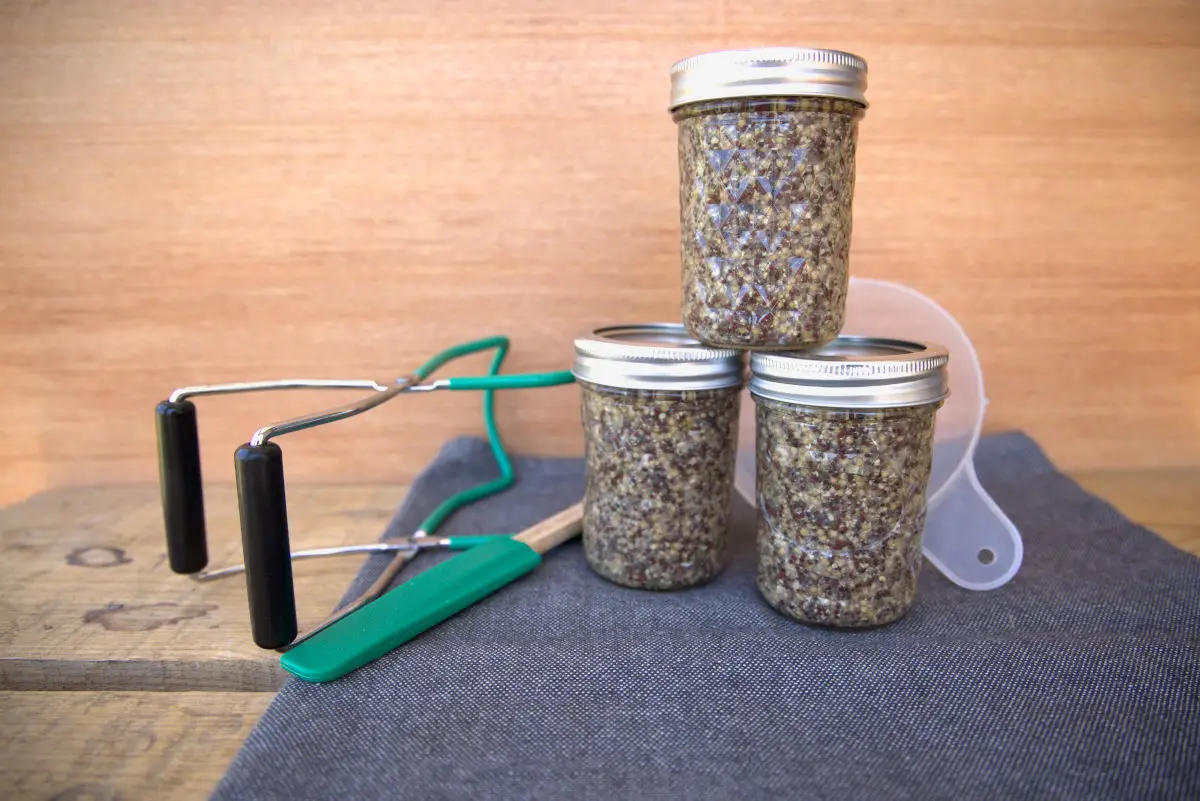
Remember to only use trusted recipes for canning! It’s a science that involves plenty of understanding before making certain adjustments. You can’t just take a recipe and assume it can be canned!
Sterilize your 6- ½ pint jars in your water bath canner and set your lids aside in a separate bowl to sterilize by ladling hot water over them once your pot is simmering. For this recipe, you can choose to use ½ pint or ¼ pint jars. Keep the processing time the same.
When carefully ladling your mixture into your jars using a funnel, leave ½ inch of headspace at the top. Run a small rubber spatula along the border of your jar to remove air bubbles. Place the lid on and gently tighten the band. Your jar is ready to go into the boiling water bath! Repeat with the rest of your jars.
Process your mustard for 10 minutes, remembering to adjust for your altitude. Here is a chart for adjusting your processing time based on altitude.
Turn the heat off and let your jars sit in the hot water for 5 minutes. Then carefully remove them and place them on a clean towel to cool. The lids might “pop” immediately, but wait up to 24 hours to see if they seal properly. If you press down on the lid and nothing happens, it is sealed!
I suggest giving your mustard about a month once canned to mellow out before using…unless, of course, you don’t mind a particularly sharp mustard. You can store this mustard in a location out of direct sunlight and it will last at least a year. Make sure you label it with the date so you can keep track. We use blue painter’s tape and a sharpie for legibility and then easy removal. Store your jars in the refrigerator once they are opened.
Making Mustard
The main thing to account for when making whole grain mustard is the soaking of the seeds! You will need 8-24 hours to soak your seeds before blending and canning your mustard. The longer they soak, the softer your seeds will be. This comes down to preference.
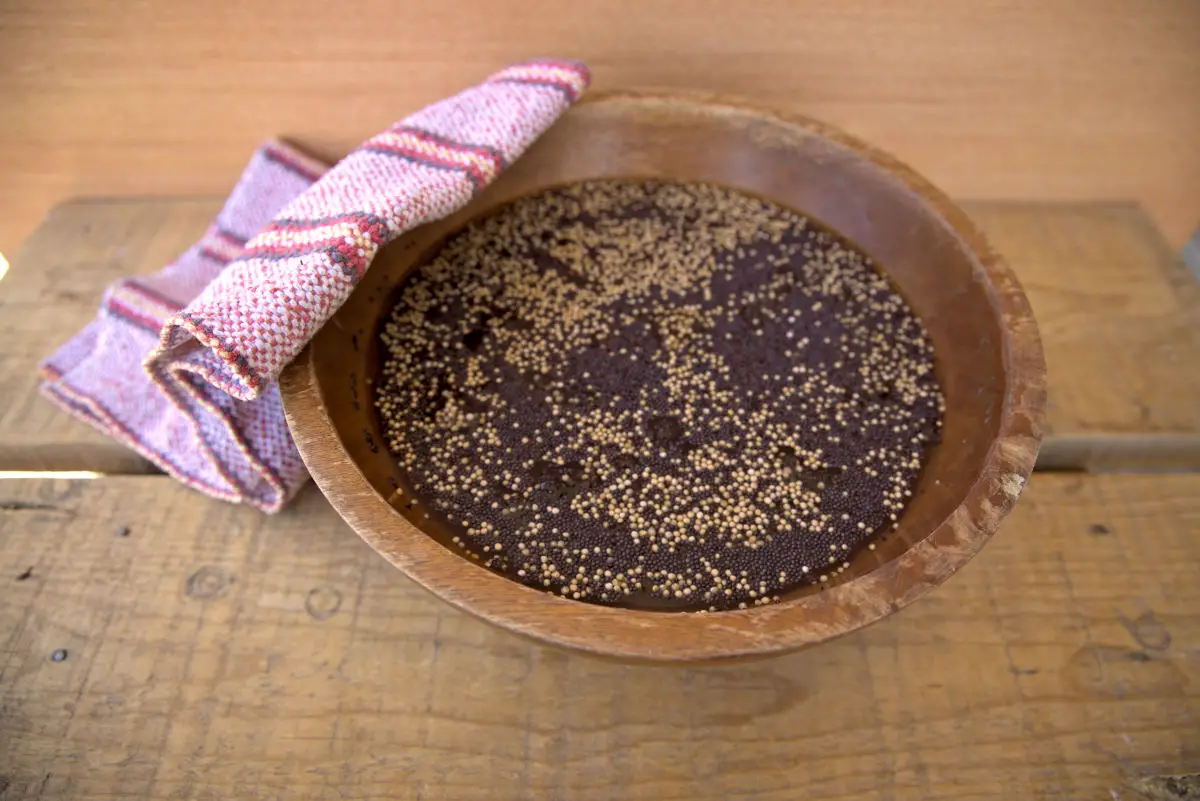
You will measure your yellow & brown mustard seeds, apple cider vinegar, water, and salt in a bowl. Mix them to combine, cover, and let sit.
After the soak, if you still have a decent amount of liquid in your bowl, pour some aside to add in after the initial blending in the food processor. You don’t want your liquid spilling out! Can you guess the mistake I made on my first go-around? Otherwise, add all your ingredients to the food processor and pulse until the mustard seeds begin to break and the mixture thickens to the consistency you desire. If you set some liquid aside, add it in after the mixture has begun to thicken.
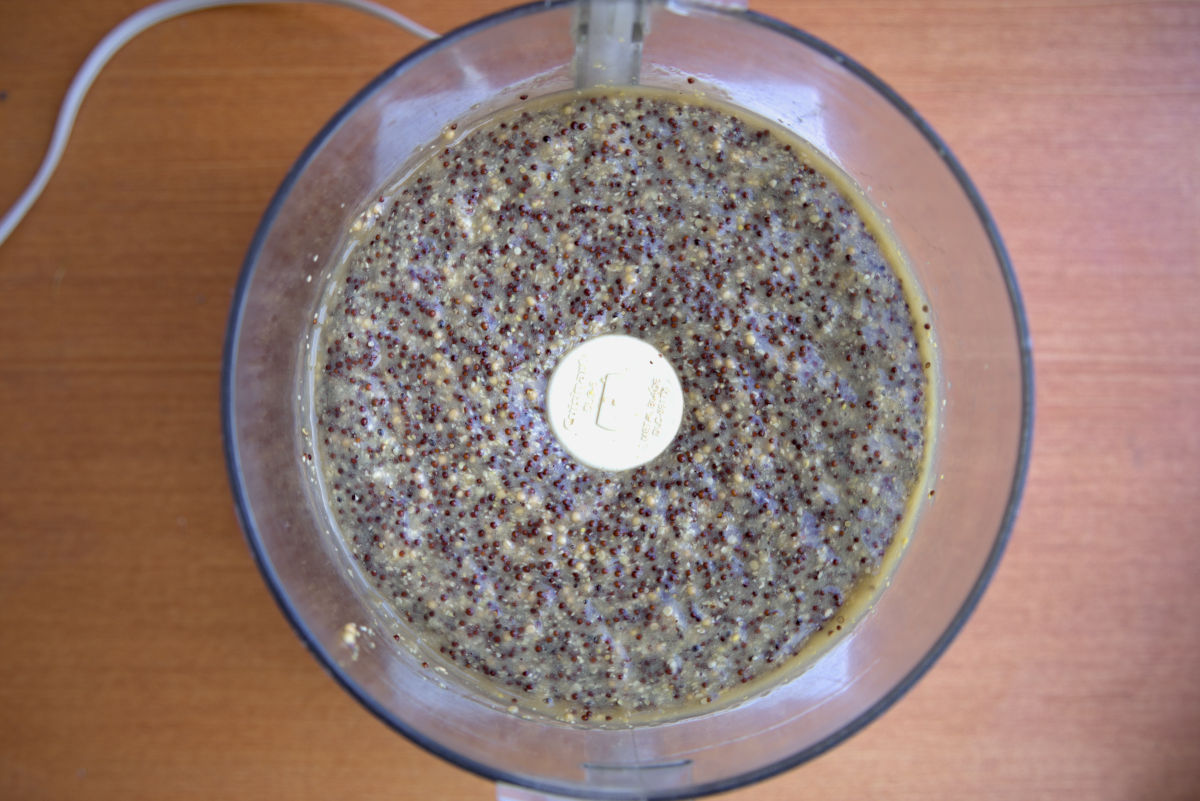
And you’re ready to can!
For extra assurance before canning, test your mustard’s pH level. If it is below (in numerical value) 4.6, then it is safe to can!
FAQs (Frequently Asked Questions)
While vinegar is traditional (and necessary for a safe pH level for canning in this recipe), you can experiment with using beer, wine, or fruit juice to add unique flavors if you don’t plan on canning your mustard.
Soaking the seeds helps them soften, making it easier to achieve the desired texture. It’s a crucial step for traditional whole grain mustard.
Absolutely. Add herbs like thyme or rosemary, or spices such as garlic or turmeric to customize the flavor of your mustard.
More Homemade Condiments
From scratch condiments are great for cutting out artificial preservatives and eating with fresher ingredients.
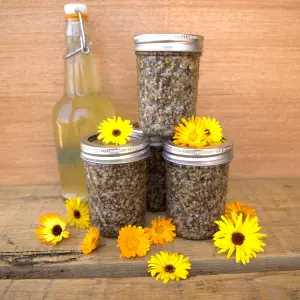
How to Make Whole Grain Mustard
Equipment
- 1 food processor
- 1 water bath canner & supplies
- 6 ½ pint glass jars with lids & bands
Ingredients
- 3 c apple cider vinegar
- 1 c white (also labeled yellow) mustard seeds
- 1 c brown mustard seeds
- 1 ⅓ c water
- 4 tsp kosher or pickling salt
Instructions
- Combine vinegar, mustard seeds, water, and salt in a medium bowl, stirring to combine. Cover with a towel and allow to soak for 8-24 hours. The longer you soak, the softer your seeds will be.
- Prepare your jars in the water bath canner and sterilize your lids in a separate bowl with boiling water. Since we are raw-packing our jars, just bring the temperature of the water to 140℉.
- Meanwhile, pour the contents of your mustard bowl into a food processor. If there is still a lot of liquid in your bowl, set aside some to add to the food processor once the mustard has begun to thicken in order to prevent leakage. Pulse until seeds begin to split and mixture thickens (adding in reserved liquid after if necessary). You can pulse to your desired consistency.
- Spoon your mixture into your hot jars through a funnel. Leave 1/2 inch headspace.
- Use a rubber spatula or chopstick to remove bubbles (by running it along the inside edge of the jars). Wipe rims clean if necessary. Carefully place lids on jars and gently tighten on bands.
- Process in your water bath canner for 10 minutes (adjusting time for altitude), starting the time once the water has reached a boil. See notes.
- Turn heat off and let jars sit in the hot water for another 5 minutes. Remove them from the canner and set them on a clean towel to cool. You might hear the "popping" sound of them sealing. Check for sealing after 12-24 hours.
- Label your jars. Store properly sealed jars in a location out of direct sunlight for over a year! Let the mustard mellow out for a month before opening. Any unsealed jars can be placed in the fridge for more prompt use.
Notes
- Adjusting your processing time for the altitude you’re at is crucial. Here is a chart to help.
- When pulsing your mustard mixture, you can take some freedom. You might like your mustard seeds more intact (as we show in our process) or you might like them more blended. Your choice.
- Any unsealed jars will still be well preserved by the vinegar. They should last 3-6 months in your fridge.
- If you prefer a less “spiky” mustard, try changing the proportion of white mustard seeds to brown mustard seeds. White mustard seeds are milder than brown. Just keep the total at 2 cups.


Leave a Reply